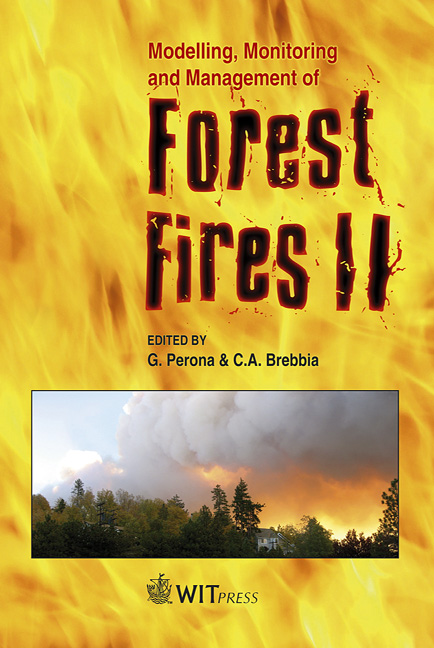Real Time Fire Front Monitoring Through Smoke With Bi-spectral Infrared Imaging
Price
Free (open access)
Transaction
Volume
137
Pages
11
Page Range
119 - 129
Published
2010
Size
1,029 kb
Paper DOI
10.2495/FIVA100111
Copyright
WIT Press
Author(s)
J. M. Aranda, J. Meléndez, L. Chávarri & F. López
Abstract
Infrared (IR) imaging is a standard technique in forest fire detection. In previous works we have shown that it can be used to classify the fire scene into regions (of embers, flame, fire front, etc). However, this requires multi-spectral images and a complex post-processing. In this paper we show that a less precise but still powerful classification of fire scenes, for distances in the range of hundreds of meters, can be done with a much simpler procedure. A fire index is obtained from bi-spectral images in the medium IR with an extremely simple processing that can be performed in real time. This makes it possible to aid the decision makers in forest fighting, by locating the fire front and the places of fire re-ignitions, and by indicating flame heights. Images of a prescribed forest fire obtained in a field campaign have been analyzed to define and validate experimentally the fire index. Comparison with the results of classification by post-processing of multi-spectral images shows a good degree of agreement, demonstrating the effectiveness of the fire-index approach. Keywords: infrared, bi-spectral, forest fires, monitoring. 1 Introduction Infrared (IR) sensors are already commonplace in forest fire related applications [1]. Satellites have become standard for fire danger estimation, mapping of burned areas and follow-up of after-fire recovery, and ground-based platforms are used in many places to provide early fire detection. However, the potentialities of IR for fire monitoring and characterization have not been fully
Keywords
infrared, bi-spectral, forest fires, monitoring





